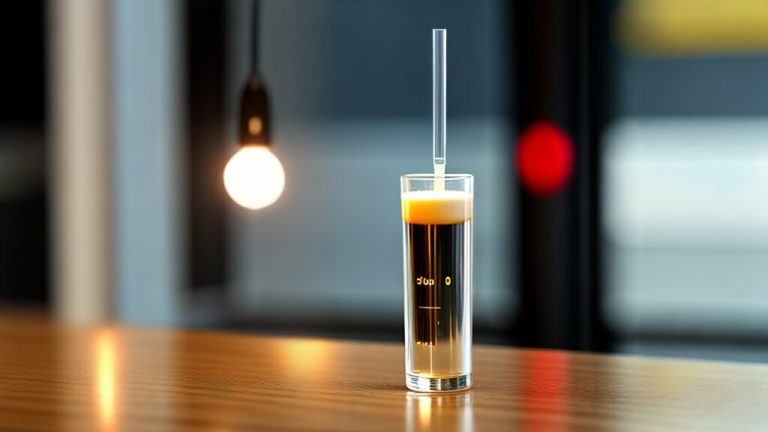What is Bovine Serum Albumin? An Informative Guide | Friendly Science
Bovine Serum Albumin (BSA) is a protein commonly found in the blood of cows. Bovine Serum Albumin is widely used in medical research and testing as a reagent due to its low cost and ability to bind with various molecules. BSA is commonly used as a stabilizer for enzymes, antibodies, and other biomolecules in research and diagnostic tests. Understanding the properties and characteristics of BSA is essential for conducting accurate research and testing.
Key Takeaways
- BSA is a protein commonly found in cow’s blood.
- BSA is widely used in medical research and testing as a reagent.
- BSA can be used as a stabilizer for enzymes, antibodies, and other biomolecules in research and diagnostic tests.
Understanding Plasma and Serum
Plasma and serum are two essential components of blood, both of which have vital roles in sustaining the proper functioning of the human body. While both plasma and serum are similar in composition, they differ significantly.
Plasma is the fluid part of blood that remains when all the cells, platelets, and other solid materials are removed. It is mainly made up of water, with proteins, electrolytes, hormones, and waste products also present. Plasma is incharge for transporting nutrients, hormones, and waste products throughout the body while also playing a crucial role in the immune response. Plasma also helps in blood clotting, which helps in stopping blood loss after an injury.
Serum, on the other hand, is produced when blood is left to clot, and the clot is then removed, leaving behind clear liquid. Serum is same to plasma in composition but lacks the clotting factors present in plasma. Mainly, the serum contains proteins, electrolytes, and hormones. Serum is a vital source of antibodies and helps maintain the body’s homeostasis.
By understanding the fundamental differences between plasma and serum, researchers can effectively use both components to gain insights into the functioning of the body and identify possible health issues that may be present.
Composition of Plasma
Plasma is an crucial component of blood and is primarily composed of water, electrolytes, hormones, waste products, and proteins.
| Component | Percent of Plasma |
|---|---|
| Water | 90% |
| Electrolytes (sodium, potassium, etc.) | 8% |
| Proteins (albumin, globulins, fibrinogen, etc.) | 2% |
| Hormones, waste products, and other components | Less than 1% |
Albumin is the most rich protein in plasma and has a vital role in sustaining the body’s fluid balance and transporting hormones and fatty acids. Globulins function as antibodies and help to protect against infections. Fibrinogen plays a vital role in the blood clotting process.
Plasma is also rich in nutrients, such as glucose and amino acids, essential for the body’s metabolic processes.
Functions of Plasma
Plasma serves several critical functions in the body, making up approximately 55% of total blood volume. One of its primary roles is the transportation of essential nutrients, such as glucose and lipids, to cells throughout the body. It also plays a vital role in washing off waste products, including urea and carbon dioxide, from the body.
In addition, plasma contains a variety of proteins that serve essential functions. For example, albumin helps regulate fluid distribution throughout the body, while fibrinogen is responsible for blood clotting. Plasma also contains immunoglobulins, or antibodies, crucial in the body’s immune reply to infection and disease.
Plasma also helps to maintain the body’s pH balance, as it contains a variety of electrolytes, such as sodium, potassium, and calcium, which are essential for proper cellular function. Furthermore, plasma acts as a carrier of hormones and enzymes necessary to regulate numerous bodily functions, including blood pressure and metabolism.
Collection and Characteristics of Plasma
Plasma is an essential blood component, around 55% of its total volume. It is collected by drawing blood from a donor and then splitting the plasma from the blood cells through centrifugation. The plasma is typically yellowish and appears when separated from the red blood cells.
One distinguishing characteristic of plasma is its ability to clot. When plasma is removed from the body and exposed to air, it will begin to clot and form a gel-like substance. This process is due to the presence of fibrinogen, a protein which helps to form blood clots. The clotting ability of plasma is also an essential characteristic in the diagnostic testing of blood clotting disorders.
Composition of Serum
Serum is a clear, yellowish fluid derived from blood after removing the clotting factors. It primarily contains proteins, electrolytes, hormones, and antibodies, making up approximately 55% of total blood volume.
The most rich protein in serum is albumin, followed by globulins and fibrinogen. Electrolytes like sodium, chloride and potassium, are also present in serum, along with hormones like insulin and thyroxine. Antibodies, produced by white blood cells in reaction to foreign substances, are crucial components of serum that aid in the body’s immune response.
Functions of Serum
Serum is a vital component of the blood, playing a crucial role in maintaining homeostasis and acting as a source of antibodies. The primary functions of serum include:
- Transportation of nutrients: Serum helps transport nutrients, like glucose, fatty acids, and amino acids to different body parts where they are needed.
- Maintenance of pH balance: Serum contains electrolytes, such as sodium, potassium, and chloride, that help maintain the body’s acid-base balance.
- Immune response: Serum contains antibodies that help the body fight off infections and diseases.
- Coagulation: Serum plays a crucial role in the blood clotting process by providing clotting factors needed for coagulation.
- Disease diagnosis: Serum can be used for diagnostic testing to detect the presence of certain diseases and infections in the body.
Overall, serum is an essential component of the blood that performs a wide range of functions, making it an essential area of research in the medical field.
Collection and Characteristics of Serum
Once blood is collected from a vein, it is typically allowed to clot for 30-60 minutes before being centrifuged to separate the serum from the clot. Serum is the liquid that remains after the clot has been removed. Unlike plasma, the serum does not contain any clotting factors, as they are used up during the clotting process, making serum an excellent source of information about a patient’s blood coagulation abilities.
Serum is typically straightforward and yellowish, with a density similar to water. It contains a high concentration of proteins, including albumin, which makes up about 60% of the total protein content of serum. Other components include electrolytes, hormones, and antibodies, essential for maintaining the body’s immune system.
Distinguishing Plasma from Serum
While plasma and serum are both components of blood, they have distinct differences that are important to understand. One of the critical differences is their clotting ability. Plasma contains fibrinogen, a clotting factor that allows it to clot, while serum lacks fibrinogen and, therefore, does not clot.
When collected without an anticoagulant, blood will naturally separate into plasma and serum. This is due to the clotting factor fibrinogen forming a solid clot within the blood sample, separating the liquid plasma from the solid components. The remaining liquid is serum.
Another difference between plasma and serum is the presence of specific proteins. Plasma contains all the proteins found in blood, including fibrinogen, while serum does not contain clotting factors and other proteins that are involved in coagulation. This means that specific diagnostic tests, such as those used to evaluate blood clotting disorders, require plasma rather than serum.
“Plasma contains fibrinogen, while serum lacks fibrinogen and therefore does not clot.”
It’s important to note that while both plasma and serum can be used in medical research, the specific components present in each can affect their utility in different settings. Understanding the differences between plasma and serum is essential for accurately interpreting laboratory test results and successful medical treatment.
Plasma vs. Serum in Medical Terms
In medical research, plasma and serum have crucial roles, especially in diagnostic testing and disease monitoring. While plasma is used to diagnose clotting disorders and infectious diseases, serum is used to detect autoimmune disorders and allergies.
Plasma is commonly used to measure the blood’s levels of proteins, enzymes, electrolytes, and lipids. It is also used to diagnose conditions like liver disease, hemolytic disease of the newborn, and sepsis. On the other hand, serum measures the concentration of biomolecules like antibodies, hormones, and antigens. It is primarily used to diagnose autoimmune disorders just like lupus and rheumatoid arthritis, as well as allergies and infections.
Both plasma and serum are valuable tools in medical research, and understanding their differences is crucial for correctly diagnosing and treating various conditions.
Plasma and Serum Comparison
While plasma and serum may seem interchangeable initially, they differ significantly in their components, functions, and collection methods.
| Plasma | Serum |
|---|---|
| Contains fibrinogen | Lacks fibrinogen |
| Yellowish in color | Clear in appearance |
| Clots when left untreated | Lacks clotting factors |
| Used primarily in transfusions and diagnostic testing | Commonly used to monitor disease progression |
In terms of composition, plasma contains various components, including water, proteins, electrolytes, hormones, and waste products. Serum primarily consists of proteins, electrolytes, hormones, and antibodies.
Functionally, plasma is crucial in transporting nutrients, removing waste, and responding to the immune. In contrast, serum helps maintain homeostasis and acts as a source of antibodies.
Finally, the collection methods for plasma and serum differ as well. Plasma is obtained by separating blood cells from the liquid component, while serum is obtained by allowing blood to clot and removing the clear liquid.
Therefore, it’s essential to understand the differences between plasma and serum to ensure their proper use in medical research and diagnostic testing.
Conclusion
In conclusion, understanding the differences between plasma and serum is crucial for medical research and diagnostics. As we have learned, plasma is the liquid portion of blood that contains clotting factors, while serum is the clear liquid that remains after clotting factors have been removed.
Plasma plays a vital role in the body’s transportation of nutrients, waste removal, and immune response, while serum is essential for maintaining homeostasis and acting as a source of antibodies.
Knowing how to distinguish between plasma and serum is essential in diagnostic testing, disease monitoring, and research studies.
By learning about the composition, functions, and collection methods of plasma and serum, we can better understand the human body’s complexities and improve our ability to diagnose and treat medical conditions.

I’m Carol Edwards, the force behind SerumDeals.com – your one-stop for all things serum. With over a decade of obsessing over skincare, I’m here to demystify sensational skin. I dig deep, testing serums in action. Beyond the surface, I uncover actual effectiveness. From ingredient breakdowns to real-life testing, my reviews are your trustworthy guide. Whether you’re a skincare rookie or diving into specifics like anti-aging or hydration, I’ve got your back with accurate info. Let’s simplify the serum journey together. SerumDeals.com isn’t just a site; it’s a hub for thriving skincare aficionados. Join me to uncover vibrant skin, one serum at a time.
Glowingly, Carol Edwards







